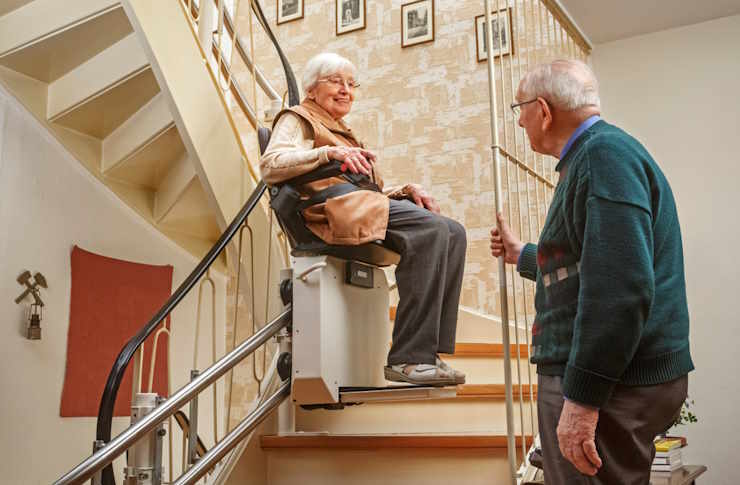Choosing the Right Senior Living Apartment: Modern Comfort and Amenities
As we age, our housing needs evolve, making the selection of a senior living apartment a pivotal decision for maintaining independence while receiving necessary support. Today's senior living communities bear little resemblance to the institutional facilities of decades past. Modern senior apartments combine elegant design with practical features, creating spaces where older adults can thrive in comfort, safety, and style. The transformation in senior living has prioritized residents' unique needs while creating vibrant communities that support active aging.

Your Guide to Choosing the Right Senior Living Apartment
Finding the perfect senior living apartment requires careful consideration of several key factors. Location should be prioritized—proximity to family, healthcare facilities, and familiar neighborhoods can significantly impact quality of life. Size and layout matter tremendously; many seniors downsize from larger homes but still need adequate space for cherished possessions and comfortable living. Consider apartments with open floor plans, wider doorways, and single-level designs that accommodate potential mobility changes.
Financial considerations play an equally crucial role. Beyond the base rent, understand what’s included in monthly fees, such as utilities, maintenance, housekeeping, or meal plans. Many communities offer tiered pricing based on the level of care needed, making it essential to evaluate both current requirements and potential future needs. Request detailed breakdowns of costs and ask about potential fee increases to avoid surprises later.
Finally, assess the community’s policies regarding personalization. The ability to decorate, bring furniture, and make a space truly feel like home significantly affects residents’ emotional well-being during the transition.
Exploring Modern Senior Living Apartments Designed for Comfort and Style
Today’s senior living apartments have elevated design standards, embracing aesthetics without sacrificing functionality. Modern units feature sophisticated color palettes, quality materials, and thoughtful architectural details that create inviting homes rather than clinical spaces. Many communities now offer a variety of floor plans—from cozy studios to spacious two-bedroom apartments—allowing residents to choose configurations that best suit their lifestyles.
Smart home technology has also transformed senior living. Voice-activated systems control lighting, temperature, and entertainment. Motion-sensor lighting prevents falls during nighttime bathroom visits. Emergency call systems have evolved from pull cords to wearable devices that allow residents to request assistance from anywhere within the community.
Perhaps most importantly, modern senior apartments incorporate universal design principles that accommodate changing needs while remaining visually appealing. Features like zero-threshold showers, lever-style door handles, and strategically placed grab bars enhance safety discreetly. Higher toilets, non-slip flooring, and accessible cabinetry make daily activities easier without creating an institutional appearance.
A Closer Look at Modern Amenities in Senior Living Residences
The amenities offered in today’s senior communities extend far beyond basic necessities, fostering vibrant, engaged lifestyles. Fitness centers with equipment specifically designed for older adults and pools with accessible entries support physical wellbeing. Many communities feature walking paths, gardening areas, and even golf putting greens that encourage outdoor activity and social interaction.
Culinary experiences have evolved dramatically, with many communities employing professional chefs who create restaurant-quality dining options. Flexible meal plans, multiple dining venues within the community, and accommodation of dietary restrictions ensure residents enjoy nutritious, appealing meals. Some communities even feature demonstration kitchens where residents can participate in cooking classes or host family gatherings.
Social and educational amenities deserve special attention when evaluating communities. Look for creative arts studios, libraries with regular book clubs, theaters for movies and performances, and computer centers with technology classes. Many progressive communities partner with local universities to offer continuing education opportunities, fostering intellectual stimulation and lifelong learning.
Understanding Cost Structures in Senior Living Communities
Senior living costs vary significantly based on location, apartment size, amenities, and services provided. Independent living typically represents the most affordable option, while communities offering continuing care with potential transitions to assisted living or memory care generally command higher monthly fees.
| Type of Senior Living | Average Monthly Cost Range | What’s Typically Included |
|---|---|---|
| Independent Living | $1,500 - $6,000 | Housing, maintenance, housekeeping, some meals, activities, transportation services |
| Assisted Living | $3,500 - $10,500 | All independent living services plus personal care assistance, medication management |
| Memory Care | $5,000 - $12,000 | Specialized care for cognitive conditions, secured environments, specialized programming |
| Continuing Care Retirement Communities | $3,000 - $11,000 monthly plus entrance fee ($100,000 - $1,000,000) | Ability to transition between care levels as needs change |
Prices, rates, or cost estimates mentioned in this article are based on the latest available information but may change over time. Independent research is advised before making financial decisions.
Beyond monthly fees, understand potential additional costs such as community entrance fees (sometimes partially refundable), à la carte services, and fee increases. Many communities require health assessments before move-in to ensure they can meet residents’ care needs. Some facilities accept long-term care insurance or offer financial assistance programs for qualifying individuals.
Making the Transition to Senior Living
Moving to a senior living apartment represents both practical and emotional challenges. Start the transition process by thoroughly inventorying possessions and creating a realistic floor plan of the new space. Professional senior move managers can assist with downsizing decisions, coordinating logistics, and setting up the new apartment efficiently.
Most communities offer orientation programs to help new residents navigate amenities and establish social connections. Take advantage of these opportunities to meet neighbors and staff members. Maintaining connections with family and friends outside the community while building new relationships creates a balanced support network during this significant life change.
The ideal senior living apartment balances immediate comfort with adaptability for future needs. Today’s communities recognize that older adults desire both independence and connection, practical support and meaningful engagement. By thoroughly researching options, asking detailed questions, and visiting multiple communities, seniors and their families can find living environments that enhance quality of life for years to come.




